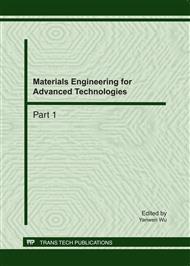p.387
p.393
p.397
p.402
p.406
p.410
p.415
p.421
p.427
Two Design Projects of Multifunctional Scanning Electron Microscope Sample Stages
Abstract:
At present, the use of scanning electron microscope (SEM) is becoming more and more extensive in the field of materials examination. But it may be restricted since most of the SEM sample stages just have single function and the existing multifunctional SEM sample stages are poor practicability. In this schematic design, two multifunctional SEM sample stages are designed by means of reforming the construction of SEM sample stage. Specifically, the aims of conducting structural dynamic observation in the process of stretching or compressing samples and detecting flexible long samples are achieved by installing different mechanical clamping devices on the SEM sample stage base. Furthermore, the two multifunctional SEM sample stages have advantages of relatively simple construction, low lost and strong practicability.
Info:
Periodical:
Pages:
406-409
Citation:
Online since:
June 2011
Authors:
Keywords:
Price:
Сopyright:
© 2011 Trans Tech Publications Ltd. All Rights Reserved
Share:
Citation:


